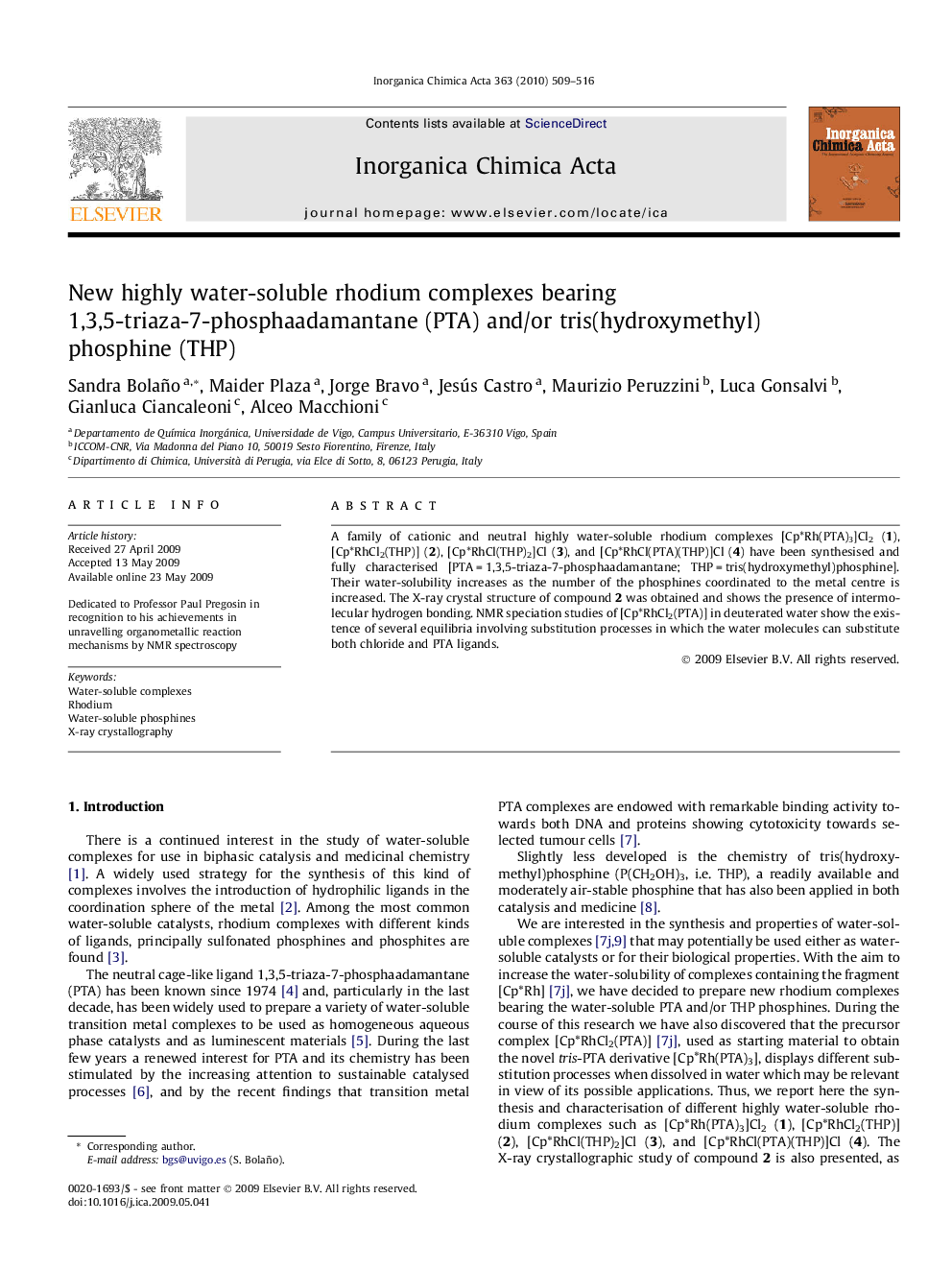| Article ID | Journal | Published Year | Pages | File Type |
|---|---|---|---|---|
| 1312645 | Inorganica Chimica Acta | 2010 | 8 Pages |
A family of cationic and neutral highly water-soluble rhodium complexes [Cp∗Rh(PTA)3]Cl2 (1), [Cp∗RhCl2(THP)] (2), [Cp∗RhCl(THP)2]Cl (3), and [Cp∗RhCl(PTA)(THP)]Cl (4) have been synthesised and fully characterised [PTA = 1,3,5-triaza-7-phosphaadamantane; THP = tris(hydroxymethyl)phosphine]. Their water-solubility increases as the number of the phosphines coordinated to the metal centre is increased. The X-ray crystal structure of compound 2 was obtained and shows the presence of intermolecular hydrogen bonding. NMR speciation studies of [Cp∗RhCl2(PTA)] in deuterated water show the existence of several equilibria involving substitution processes in which the water molecules can substitute both chloride and PTA ligands.
Graphical abstractNew highly water soluble rhodium complexes [Cp∗Rh(PTA)3]Cl2 (1), [Cp∗RhCl2(THP)] (2), [Cp∗RhCl(THP)2]Cl (3), and [Cp∗RhCl(PTA)(THP)]Cl (4) have been synthesised and fully characterised [PTA = 1,3,5-triaza-7-phosphaadamantane; THP = tris(hydroxymethyl)phosphine]. NMR speciation studies of [Cp∗RhCl2(PTA)] in deuterated water show the existence of several equilibria involving substitution processes in which the water molecules can substitute both chloride and PTA ligands.Figure optionsDownload full-size imageDownload as PowerPoint slide
